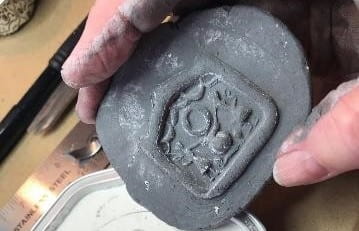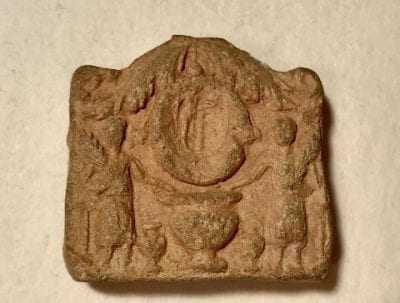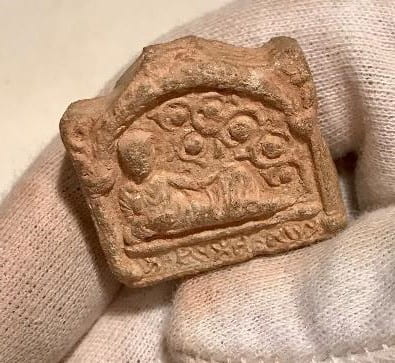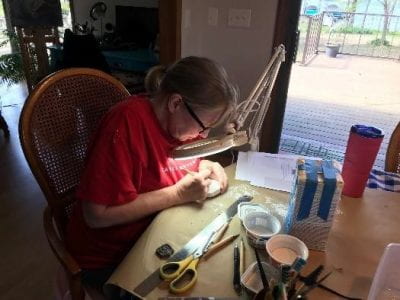Dr. Rhodora Vennarucci is an Assistant Professor of Classics and Art History at the University. Every spring semester, one of her classes visit the University of Arkansas Museum for a unique assignment. Vennarucci works beforehand with staff to select Greek or Roman artifacts (depending on the class) from the archeological collections for her students to analyze up-close. From kylix (cups) and lekythos (vases) to small terracotta lamps, the Museum’s ancient Greco-Roman materials dates back centuries.
Examples from the Museum’s ancient Greco-Roman collection.
Left – Roman terracotta lamp; Right – Greek lekythos (vase)
This spring Dr. Vennarucci taught “Roman Art and Archeology.” Her class was luckily able to visit in February before campus shutdown for the pandemic. At the end of the semester, we learned that one of the students, Cheri Ottaviano, took such an interest in one of the Museum’s artifacts that she focused on it for her final paper!
In it, Ottaviano explores the following banqueting tessera (89-188 A.D). These small tokens were required for entrance to certain religious ceremonies or banquets.
Front and back images of the tessera Cheri Ottaviano studied for her final assignment.
Ottaviano also investigated artist design and manufacture of tessarae:
“[It] would have involved creating a mold for each side. Using dried plaster or pastillage, a scene or portrait was carved using small pointed tools to create an imprint. Or, a carved image could have been pressed into plaster, the plaster dried, and the image removed. This method enables an imprint to be used for molding small pieces of clay. The two sides would have been placed together, pressing an image on each side of the clay. The piece would be removed and left to dry and baked in an oven. It is believed that these tokens were painted since some artifacts have been found to contain traces of red.”
To further understand the manufacture process, Ottaviano created her own replicas at home.
Snapshots of Cheri Ottaviano’s replica creation.
Museum staff were thrilled at this student’s work! Cheri Ottaviano’s research has helped shed more insight into this fascinating token. A copy of her paper will be held in the Museums’ records for future researchers.









Cheri Ottaviano is my daughter and she never does anything halfway, especially when her curiousity is aroused! I know she loved exploring and replicating this! Thank you for sharing this.
That’s so wonderful to hear! We really appreciate her contribution to the collections.